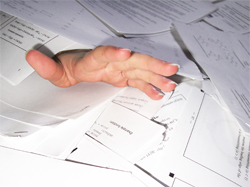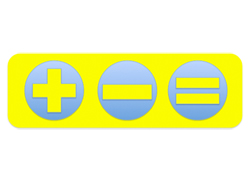Given how hard teaching is from time to time, it’s important to concentrate on the many positives. Downe House’s head of MFL discusses how to battle apathy and annoyance.

I do like my job. Of course, I do have moments when I want to pack it all in or plan myself a new career but those are normally moments at the end of term when I know that I am at my lowest point in terms of energy and creativity. It’s often at that time that I feel overwhelmed with my to-do list which I write out religiously everyday. There are even days when I have been too busy the night before to write out my plans so I will write it out after the events have happened so that I can cross out each achievement with satisfaction. Tell me I am not the only one who does this?
So, with all this negative press about teaching how could I possibly like my job? It is not easy to identify one particular thing. I enjoy many aspects of the job I do. I think most importantly I enjoy teaching and I enjoy thinking about how best to convey what I want my pupils to learn. I love thinking of ways to engage my classes so that they are motivated and inspired to learn. It’s what I feel is the creative element of my job and I know that I do have some good ideas. However, importantly, I also know that it is important not to reinvent the wheel. Inevitably, someone in my department or one of the lovely #mfltwitterati will have a great idea to share and so I never feel that the ideas have run out. I consider myself incredibly lucky in this respect. Creating is what I do when I have got all the horrid stuff out the way. Yes – there are elements of the job that I do not like. Marking. I don’t like marking. Well, I like it because I can see what my pupils have mastered and how well they have done. On the other hand, there is nothing more depressing than sitting down to a pile of marking or papers full of mistakes on the very grammatical concept you have just spent a week or so teaching. So, marking is something I do not enjoy. In fact, right now, I’m putting off marking…

Exam boards cite many benefits to exams becoming computer-based rather than using the traditional pen-and-paper.
Results can be computed almost immediately and with total consistency, and there are major cost savings on marking and general logistics to be enjoyed.
The question is, do students have the keyboard skills to cope with computer-based assessments? It would be a scandal if children were to fail, not on their lack of knowledge, but because they could not type their answers quickly enough.
When work is marked, it usually only includes a single grade with a sentence of constructive criticism. However, the benefits of using categorised marking ensures that the student is totally clear on where his/her strengths are, where they need to improve, where they lack understanding and any parts of the exam criteria that they have missed.
Using different colours or symbols will also ensure that students take more notice of specific comments as they are given a thorough analysis and a clear and plausible route for improvement. Who knew just one piece of work could hold so much insight?

Ah, the dreaded red pen. Students, parents and SLT often cringe at the sight of the red ink used by a teacher. Maybe because it's a symbol for blood?
I think it's more likely to be linked to the idea that teachers from a previous age would use just a red pen to mark work and would be likely to mark negatively; pointing out mistakes or circling poor work.
However, when a teacher marks their books now, they are usually (or hopefully) better trained into what marking works and what will benefit their students' learning.

I was wondering how useful your schools' marking policy was to you as a teacher and, of course, to your pupils.
Marking policies are there to help teachers have a common framework by which they can regularly assess their pupils; this is useful enough and many have a timeframe attached. For example, they may state that marking must be carried out every three weeks.
Clearly, the idea is that pupils need regular feedback on their written work and this is often interpreted by time-pressured teachers who quickly tick through notes and add depth to one 'substantial' piece of writing. This is an example of an asynchronous process and, in my opinion, it is not particularly helpful for pupils or teachers!
The depth of the feedback offered can be as detailed as anyone may ask: literacy/numeracy comments, next steps, grades or levels, literacy/numeracy levels and feedback by pupils. The best assessment, however, is not driven by imposed windows of time.

It is great to know that peer assessment can be a time saving, effective form of feed forward. However, we cannot expect our pupils to complete all of our marking… can we? Teachers hate marking books! I have never met a teacher that said: “I have a lovely big pile of books waiting to be marked on my desk; I can’t wait to get started!” Marking takes time that teachers just do not have.
Assessment of any type is completed to provide pupils with a way of moving forward with their learning. It should not be completed in one large batch just before a work trawl. The marking method that follows was developed as a result of me wanting to mark every piece of work that pupils complete but simply not having the time. I took an existing idea named plus, minus equals and developed my own method of delivery that helps me save time while still effectively assessing pupils’ work.

A community-driven platform for showcasing the latest innovations and voices in schools
Pioneer House
North Road
Ellesmere Port
CH65 1AD
United Kingdom